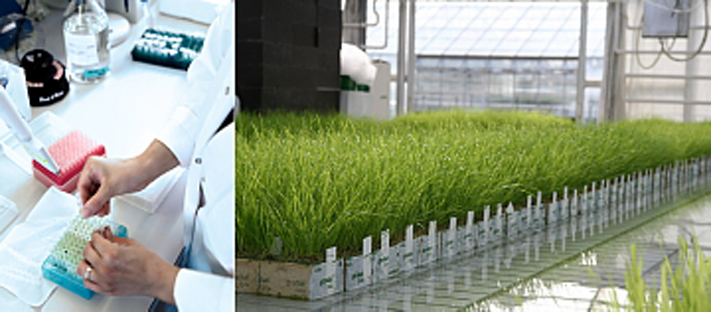A historic year for grass breeding in 2014
Genome Wide Selection (GWS) is making its way into plant breeding and in DLF-TRIFOLIUM we mark this year as the first in which the technology has come into effect.
It is certainly not every year a new chapter is being written in the book of plant breeding. However, this year for the first time ever, DLF-TRIFOLIUM will start selecting new forage grasses based on Genome Wide Selection (GWS) and thereby inscribe itself into the history book as the first grass breeding company to implement this new technology.
It all started four years ago, when breeders and scientists at DLF-Trifolium ramped up a major project along with scientists at Aarhus University, Denmark aimed at exploring the potential of GWS in grass breeding. Although four years in relation to breeding is a very short time the four years have been overwhelmingly intense and challenging. Resources have been put to their limits not only at the breeding station in Store Heddinge, but also at the stations in England, France, and Holland. "The number of field trials, lab analyses and computer calculations we have performed in this period is completely unprecedented", says senior scientist Christian Sig Jensen, who has been coordinating the project.
"The goal for us is both to improve breeding gain, streamline the breeding process, and to reduce the current development time from 10-11 years to 7-8 years. GWS allows us to perform a selection on the offspring immediately after crossing. In this process we DNA-test the offspring immediately after harvest and based on the models that have been developed through the project we can predict each offspring’s potential for several different traits, including biomass, forage quality, disease resistance, stress tolerance, etc. So, before going to expensive field test we can already discard the 50% that does not have the genetic potential to become a winner. This will save us a lot of effort and allow us to perhaps include more crossings, which here is equal to increasing chances of finding the correct genetic combination."

